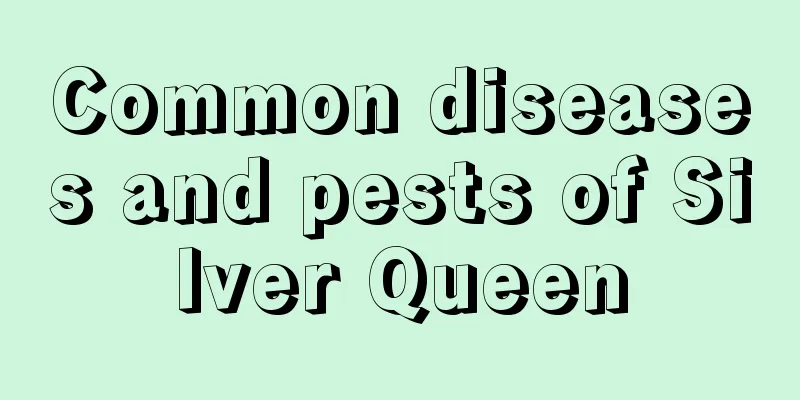Common diseases and pests of Silver Queen

Silver Queen Leaf SpotdiseaseThis disease is more likely to occur in humid weather. Initially, brown spots will appear on the leaves, which will gradually turn green around the edges and spread in a ring-like pattern. The edges will be brown and the inside will be grayish white. In the later stage, the spots gradually expand and dark brown spots appear. In a humid environment, a dark brown mold layer will form. Prevention and treatment methodsRemove diseased and damaged leaves promptly, and remove the leaves immediately if black spots are found. In the early or late stages of the disease, 0.5% to 1% Bordeaux mixture or 1000 times diluted 50% carbendazim can be sprayed. Silver Queen AnthracnosediseaseInitially it will occur on the leaf hill of Silver Queen, and in severe cases it will spread to the entire plant. When the disease first occurs, small yellow spots like water stains will appear on the leaves, which gradually expand to appear as round or oval brown or yellowish-brown spots. Later, the leaves wither and produce many small black spots. This disease is often caused by poor ventilation, and the condition will be more serious when there are scale insects. Prevention and treatment methodsStrengthen maintenance, increase the application of phosphorus and potassium fertilizers, and increase the plant's disease resistance. Open windows and ventilate in time to ensure smooth air flow in the plant maintenance environment. In the early stage of the disease, you can use Bordeaux mixture or 1500 times diluted thiophanate for spraying. Silver Queen Brown Soft ScalediseaseWhen soft scale insects harm plants, they generally gather on the leaf surface or young leaves, sucking the sap of the plants and excreting mucus. Their excrement can easily cause the massive reproduction of sooty mold bacteria, causing the stems and leaves to turn black, affecting the photosynthesis of the plants, resulting in weak growth, yellowing of leaves, and hindering the appreciation of the plants. When the infestation is severe, the branches and stems are covered with insect bodies, causing the plants to wither and turn yellow, affecting their growth. Prevention and treatment methodsIf there are few affected plants or the number of insects is small, you can usually just scrape off the insect bodies with bamboo strips or something similar. If the leaves are already damaged, try to cut off the damaged leaves. Then spray the disinfectant for disinfection. |
<<: Common diseases and pests of lipstick flower and their prevention and control methods
>>: Forget-me-not pest control
Recommend
How to grow lantern flower
The lantern flower , scientifically known as Fuch...
How to propagate peony
Propagation by division It can be propagated by d...
How and when to plant chrysanthemum
Before sowing Chinese cabbage, soak the seeds in ...
What is the best month to plant water spinach in Henan?
When is the best month to plant water spinach in ...
What crops are suitable for growing on barren land?
What crops are suitable for growing on barren lan...
Should I use a large or small pot for the goldfish plant?
Should I use a large or small pot for the goldfis...
What kind of water should be used to grow dragon bamboo? What should be paid attention to when growing dragon bamboo in water?
1. What kind of water to use Aquaculture is a ver...
How to sow cockscomb
Steps of sowing Before sowing, spread some base f...
The flower language of osmanthus, when does osmanthus bloom
1. Flower Language 1. Harvest: Its flowers usuall...
The efficacy and function of leek
The benefits of leeks Leek can enter the kidney m...
Advantages and disadvantages of Guan Xiaoyi rose
The full name of Guan Xiaoyi is Little Eden. It i...
How to raise Jilongyue in winter
temperature When the indoor temperature is below ...
How long is the growth cycle of sword beans?
Introduction to the growth of sword beans The you...
How many years does a cherry tree bear fruit?
1. Results of several years Under normal circumst...
Common diseases of hibiscus and their prevention and control methods
Hibiscus leaf spot Hibiscus leaf spot is a fungal...









